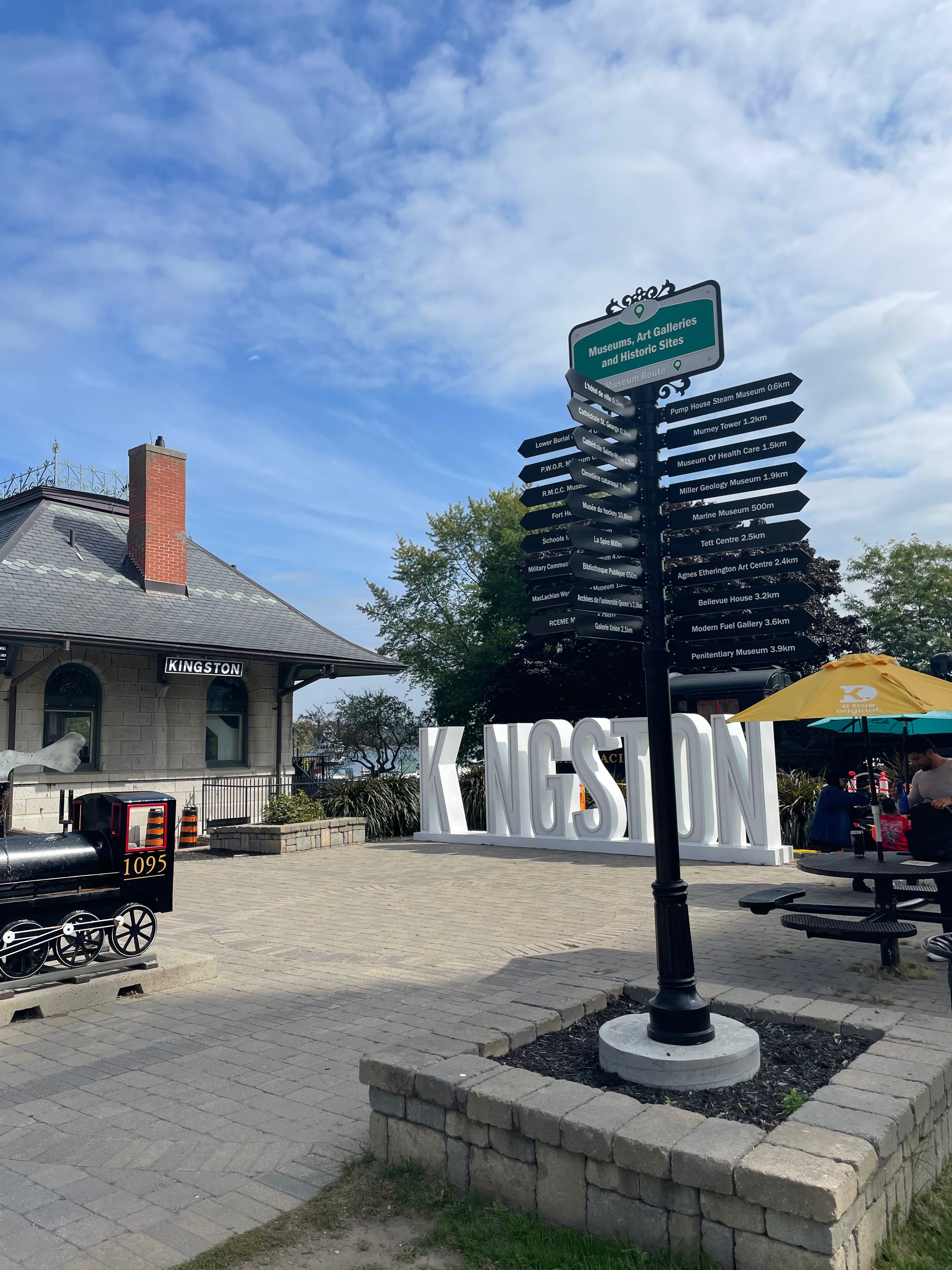
Written by: Emma Wyse
If you are looking for an experience which perfectly marries history and the present, art with technology, and a stunning indoor space with outdoor activities, look no further than the Mississippi Valley Textile Museum (MVTM). In operation since 1990, the museum is located in Almonte, about 1.45 hours from Kingston, and 45 minutes from Ottawa, making it ideally situated for a day trip visit. I visited the museum on a grey and drizzly Tuesday in June and was very kindly shown around the museum by Michael Rikley-Lancaster, the Executive Director and Curator of the MVTM.
The site of the museum was once the annex of the Rosamond Woolen Company, a textile operation founded in Almonte in 1861 which specialized in making material for suits. The Rosamond Woolen Company was one of many mills and textile companies operating in the Mississippi Valley region at the turn of the 20th century, as the geography of that area—with its powerful rivers and many waterfalls—was ideal for the construction of mills. In fact, the first settler in Almonte, David Shepherd, constructed a sawmill and gristmill in 1819. The very reason that Almonte exists is down to its history of mills.
The Rosamond family began the business of fabric production in the mid-nineteenth century with James Rosamond’s operation of the Victoria Woolen Mill in Carleton Place. However, in July of 1852 the Victoria Woolen Factory Mill burned down, and James turned his focus to nearby Almonte. He acquired land on Coleman Island in Almonte by the falls and worked to construct a large mill complex which, by the end of the 19th century, included a large six story stone building complete with a tower, a dye house, a warehouse, a counting house, and the annex.


James handed over the management of the Mill in 1862 to his sons Bennett and William Rosamond who took over the business and continued expanding it. With this successful expansion the Rosamond mill became the largest textile mill in Canada at the turn of the 20th century and it specialized in making fine woolen fabrics. At its peak it employed 400 Almonte residents. The end of the 19th century, and beginning of the 20th century, was a period of rapid industrialization and mechanization across Canada, and the new technology introduced in these mills streamlined the process of fabric making with the introduction of new machinery, turning what had previously been a laborious hand craft into something that could be mass produced. Visiting the MVTM allows you to step back in time and appreciate the technological advancements necessary for fabric production, something we now take for granted.
On the second floor of the museum you can learn more about the history of the Rosamond Woolen Company, and about the process of textile production more generally. The permanent second floor exhibit is a well-crafted mix of text displays, photographs, artifacts, videos, and even a taxidermized sheep.
A series of videos spaced throughout the exhibit give voice to some of the former mill workers as part of an oral history project. It’s impactful to be able to hear the workers talk about what their lived experience at the Mill was like, and how they went through the many laborious steps necessary to create fabric. After all, the majority of townspeople living in Almonte were once workers at the mill. According to the MVTM website, “By the turn of the 19th century, there were 10 woolen mills in Almonte,” and “Approximately 1,600 of the 3,000 residents of Almonte worked in a textile mill.” Needless to say, the history of textile production goes hand in hand with the history of Almonte itself.

But the second floor is more than just a museum space, it’s also an artisan workspace with multiple looms set up for making tablecloths, tea towels, and other textiles. When I visited the museum, I was lucky enough to meet one of the artisans who showed me how the loom worked. If you’re there at the right time you might get a demonstration like I did!
The Rosamond Mill changed ownership several times, although it stayed within the Rosamond family until 1959 when it was sold to Zephyr Textiles. It was open for operation until 1980 when it finally closed, the last mill in Almonte to do so. Whereas once, “for the Mississippi Valley region, wool [was] a way of life,” by the last quarter of the 20th century Almonte had moved away from being a textile producing town. Now, 42 years after its closure, the Rosamond Mill has been refashioned into a condominium building. Although Almonte is no longer a textile producing town, the history of the industry can be seen and felt through historic sites like the MVTM.


The museum is open to visitors for the summer season, June 1 to August 31, Tuesdays through Saturday, 10am to 4pm. The rest of the year (September 1 to May 31) the museum remains open with adjusted hours. Tuesday through Friday, 10am to 4pm, and Saturday noon to 4pm. Stop by for a visit to learn more about the fascinating textile production history of Ontario!
